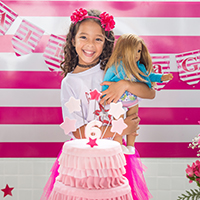 Much like opportunity cost, budgeting is another concept that comes up quite naturally during the day. The easiest example with kids is teaching them to budget their time. The easiest way is to backwards plan regarding leaving for a trip. Have them name all the little events and tasks that need to take place before you can leave: making the bed, changing clothes, eating breakfast, feeding the pets, brushing teeth, brushing hair, bringing a book or gadget, putting on shoes, etc. I will ask, “How long does it take you to put on your shoes? Correction: How long does it take you from the time I tell you to put on shoes to the time you actually do it?” Because, that’s two different values, right? We add up all the times and subtract it from the time we need to be in the car and on our way. This is essentially budgeting. Have the kids budget their time.
Much like opportunity cost, budgeting is another concept that comes up quite naturally during the day. The easiest example with kids is teaching them to budget their time. The easiest way is to backwards plan regarding leaving for a trip. Have them name all the little events and tasks that need to take place before you can leave: making the bed, changing clothes, eating breakfast, feeding the pets, brushing teeth, brushing hair, bringing a book or gadget, putting on shoes, etc. I will ask, “How long does it take you to put on your shoes? Correction: How long does it take you from the time I tell you to put on shoes to the time you actually do it?” Because, that’s two different values, right? We add up all the times and subtract it from the time we need to be in the car and on our way. This is essentially budgeting. Have the kids budget their time.
 When it comes to including the condition of money, we have already heard of great tools out there like the Give, Save, Live piggy banks. This is a great and proven way to help a child understand budgeting. These banks emphasize in emphasize the importance of naming every dollar as soon as you get it. This teaches your kids the simple concept that “You have to know where your money is going”. Otherwise, it will leave and you won’t know where it went! And when you don’t know where it went, often you have overspent. Naming and knowing the destination of your money makes money your servant rather than the other way around.
When it comes to including the condition of money, we have already heard of great tools out there like the Give, Save, Live piggy banks. This is a great and proven way to help a child understand budgeting. These banks emphasize in emphasize the importance of naming every dollar as soon as you get it. This teaches your kids the simple concept that “You have to know where your money is going”. Otherwise, it will leave and you won’t know where it went! And when you don’t know where it went, often you have overspent. Naming and knowing the destination of your money makes money your servant rather than the other way around.
For example, if my daughter receives $20 total from birthday cards (even if it’s given through gift cards), I’ll sit down with her and scratch on a piece of paper where each dollar may go. The 5 minute conversation ends with her saying she’d like to give $2, save $2 and spend $16. She has effectively planned or laid out a budget by naming every dollar and we did it very soon after receiving the money. These conversations go a long way to taking the mystery out of money for your children.

Next, we put this piece of paper into a folder and simply label it “BUDGET”. You may even use Excel or Access or Quickbooks. The lesson is quite simply the importance of writing it down. AND you create a record that can be reviewed. I believe it is equally important for my child to be able to tell me where there money went as it is to decide where it should go in the first place.
Planning is at the heart of creating breathing room: spending less than your income.




